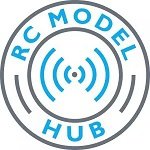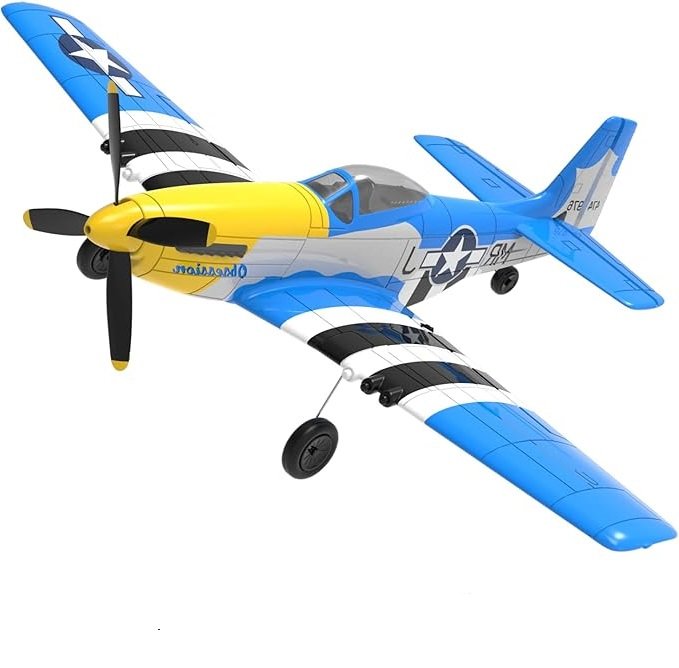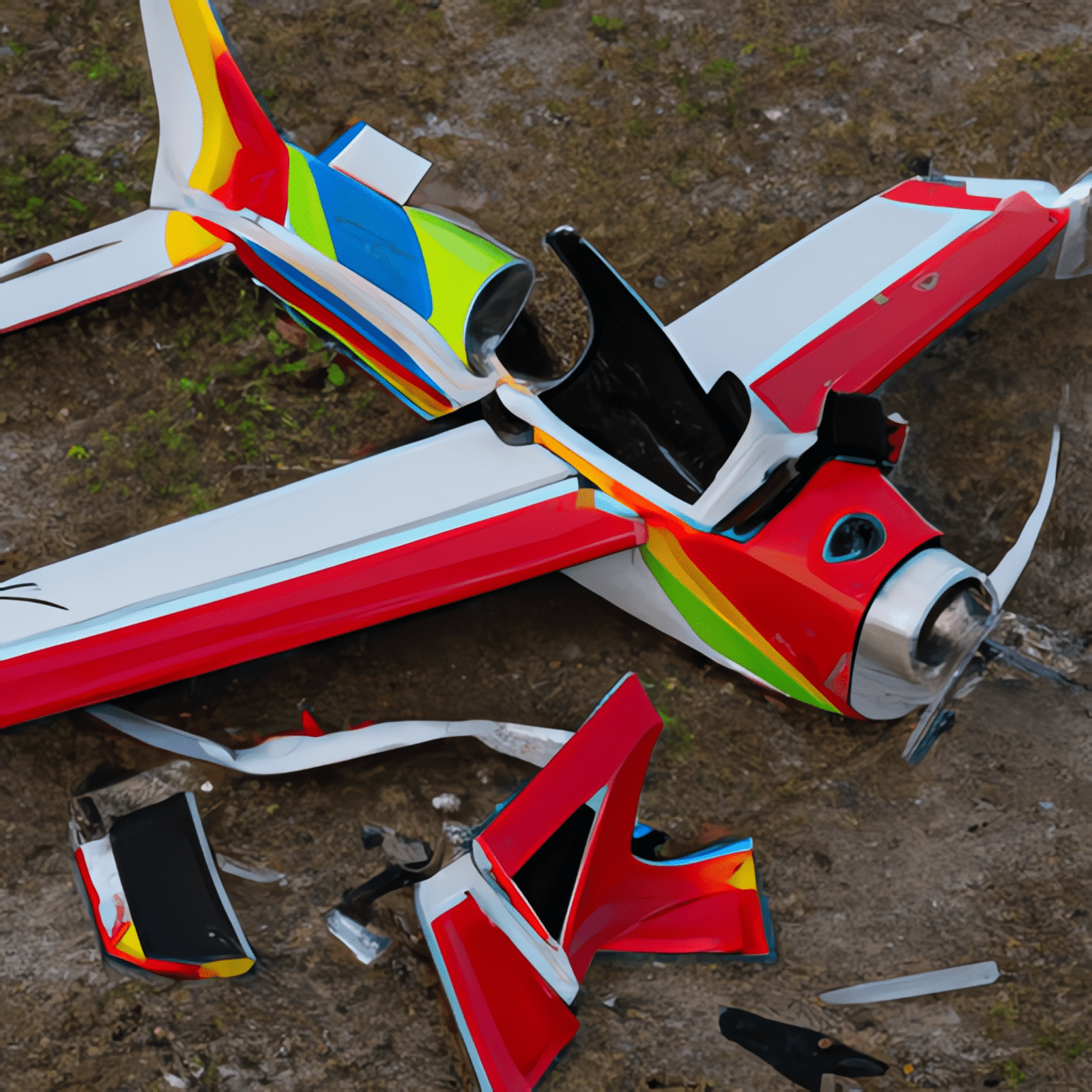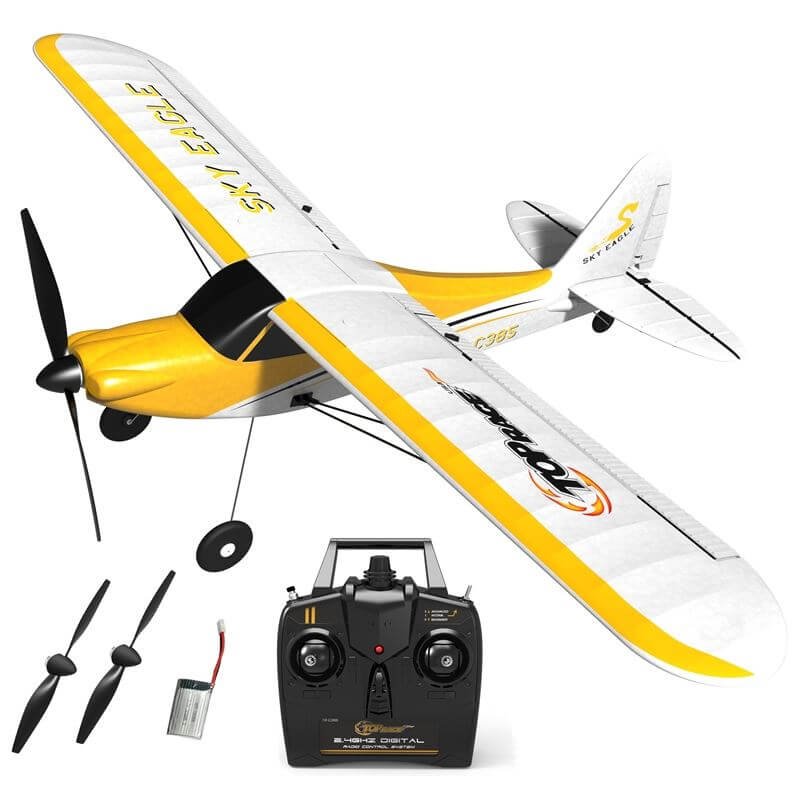Any links on this page that lead to products on Amazon, the Ebay Partner Network (EPN) and other companies may be affiliate links and we earn a commission if you make a qualifying purchase. Thanks in advance for your support!
RC planes for beginners are experiencing an upturn in popularity, as more manufacturers produce life-like models of real airplanes which can be easily controlled by rc pilots new to the hobby. However, there are now tons of options out there – numerous models that promise a variety of features, competitive prices, and technology to choose from. It’s easy to get overwhelmed so I dived into finding out as much about them as possible.
Which is the best beginner RC plane? There is no “best RC plane for beginners”, as it depends on so many factors personal to you, but we look at a range which could suit you to the ground.
This article provides you with some of the best RC planes for beginners (RTF) to choose from, keeping in mind all the features and requirements that a novice pilot will need.
The Best beginner RC plane is one that best matches the budget and skills of the new pilot, as well as their preferences in terms of airplane style. However, there are specific characteristics that are common to all of the best beginner RC planes. These are:
- Come RTF (ready to fly)
- Have a high wing configuration
- Be made of a resiliant material, like foam
- Have components which are easily re-constructed or replaced after an accident
- Incorporate flight stability gear, such as SAFE
- Have an electric motor driving a propeller
- No more than 3 or 4 channel controls
- Come from a well known manufacturer, for spare parts and service
- A spare battery or two
I’ve detailed below the key things to look out for and found some excellent beginner RTF rc planes, which will save you a lot of time if you’re looking for one to buy. I won’t reveal ’til later which one I went for!
RC Planes For Beginners (RTF) – Top Picks
Here’s our top picks’ table of highly recommended RTF rc planes for beginners, one of which is bound to suit you to the ground (or air!):
For lots more detail on each of these, and videos, scroll further down the page….
Any recommendations we make are always based on either products we already own and use, or are carefully assessed in terms of their attributes and user feedback – criteria we use ourselves whenever we buy. Where products sold by Amazon are suggested, they will have the following criteria at the time of writing, unless there are no alternatives available:
- Minimum of 4 stars
- No more than 10% of all reviews are 1 or 2 stars
- The product has a minimum of 100 reviews
We also highly rate products that have free shipping or are sold through Amazon Prime.
In addition:
- We’ve spoken to a number of rc experts and hobby shops and we’ve taken account of the feedback
- Views of prominent Youtubers, such as Essential RC
- The reviews of people who have actually bought the airplane and used it.
Top Picks Table
| Image | Product | Features | Price |
|---|---|---|---|
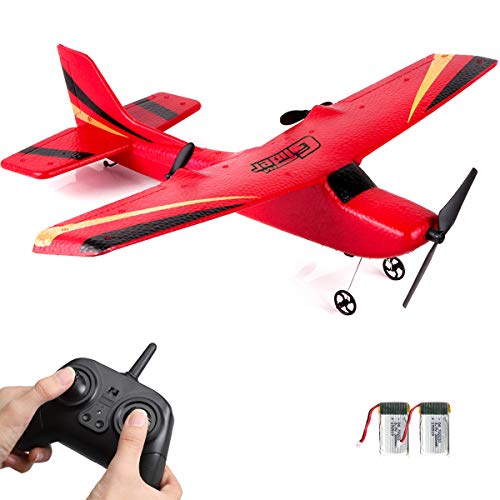 |
| Check details on AmazonCheck details on Ebay | |
 |
| Check details on AmazonCheck details on Ebay | |
 |
| Check details on AmazonCheck details on Ebay | |
 |
| Check details on AmazonCheck details on Ebay | |
 |
| Check details on AmazonCheck details on Ebay | |
 |
| Check details on AmazonCheck details on Ebay | |
 |
| Check details on AmazonCheck details on Ebay |
For more detail about any of these rc planes, take a look below.
While it might be tempting to go for the really flashy, and sleek, high-end, high-tech models, opting instead for a sturdy, reliable rc plane with good ground control along and safety features and self-leveling technology, would be prudent.
A plane that is stable, easy to operate, and has a slower flying speed can be put in the beginner category.
There are a lot of questions you need to consider before you pick your first plane. Do you go for a 2, 3 or 4 channel RC plane? What about the size and the materials used to build it? What features do you need to look out for?
If you’re a beginner, you’ll want to major on robust, stable, and easy-to-fly models, such as the hobbyzone rc airplane carbon cub s2 (more details here (US), (UK), (Canada). This is particularly so if you get caught out in windy or rainy weather.
Here are the most important things…
What Are The Important Things For RTF RC Planes for Beginners?
The Complete Package
Make sure that you get everything in the box you need to start flying – possibly with the exception of some AA batteries for the transmitter. You should look out for:
- The airplane fuselage, wings and all operating surfaces such as the rudder, elevators and ailerons if fitted. These should all be in place and working right out of the box.
- The motor and propeller, fitted to the fuselage.
- Landing gear. This is often separate in the box, but can usually be easily fitted.
- Batteries. Usually Nimh or LiPo batteries with charger. Look out for 2 batteries to extend your flying time.
- Receiver with servos. Already installed in the aircraft.
- Transmitter. This is usually on the 2.4 Ghz frequency, which is the most common.
Quick Assembly
The ideal beginner’s RTF rc plane will be ready to fly right of the box. If there is any assembly required, it should be minimal, such as clipping on the wire undercarriage.
RTF (Ready To Fly) or BNF (Bind N Fly)
RTF rc planes usually are literally ready to fly right of the box. Perhaps the only thing you will need to do is add AA batteries to the transmitter, charge the battery in the plane and read the instructions or user guide.
Alternatively, some planes come as bind-n-fly (BNF) aircraft. BNF planes are aimed at hobbyists who already have a compatible transmitter, flight battery, and charger, usually because they already have an rc plane.
The advantage of BNF planes is that you save on ancillary costs.
For the purpose of this article, however, we’re focussing on absolute beginners who are buying their first aircraft, so we’ll look at RTF only.
High Wing or Low Wing RC Plane?
The high-wing design is better suited to beginners as it is more stable in flight than a low-wing model. Many of the best RC trainer plane models do have high wings.
However, the incorporation of flight stability technology – see below – now makes the wing configuration almost irrelevant.
What Is “Safe” Technology?
The wide introduction of “Safe” (Sensor Assisted Flight Envelope) technology into the hobby has meant that many trainer airplanes have beginner-friendly flight characteristics, and are much easier to fly in tricky conditions, such as on windy or rainy days.
They are a boon for beginner pilots and experienced pilots alike.
SAFE technology is able to limit the actions of the novice pilot to allow the airplane to fly normally, and continue to fly even if the controls are set to their extreme limits. So SAFE limits the extent to which the plane’s flight controls – the rudder, elevators and ailerons – can be moved in flight.
But, a plane with SAFE onboard doesn’t limit your abilities as a pilot. There are options that involve beginner, intermediate and advanced settings, so you can tailor the amount of “help” you receive from the technology according to your abilities.
In the beginner setting you will be restricted, however, to fairly gentle maneuvers, and only in the advanced mode will you be looping the loop.
Other features of the technology mean that you’re less likely to have a disaster as you learn:
- AutoLand brings the plane down safely by pressing a button
- Holding Pattern recovers the airplane to a pre-defined GPS point
- Virtual Fence confines the plane to an area
- Panic Recovery automatically brings the aircraft back to flying level
Each manufacturer has their own version. For example, Horizon Hobby has ‘ACT’ (Anti-Crash Technology™) and Volantexrc has the Xpilot stabilization system.
Another technology is Horizon’s AS3X™ (Auto Stabilisation 3-Axis™), now found on many of their model aircraft. AS3X dampens out unwanted interruptions to the plane’s flight path (i.e. mainly from wind gusts) and ensures a smoother flying experience.
What’s the Best RC Plane Motor For Beginners?
The main choice here is between the Internal Combustion motor and the Electric motor (We won’t even go near jet-powered, or EDF, motors until we’ve gained some experience).
Most beginner rc airplanes are electric-powered these days, driving a propeller, as they are easier to operate, cleaner and in some cases safer, as there is no combustible fuel to deal with.
What’s The Best Construction Type For a Beginner RC Plane?
I was told by an old hand at this hobby that I can be sure of one thing – at some point – probably shortly after I first take control – I’ll crash, even with SAFE technology on my side. (As an aside I did wonder whether I should insure my rc plane – I talk in detail about that here).
So far any mishaps I’ve had have not been too major, but a big factor is the way the plane is constructed, and what it’s made of.
The most robust materials for rc plane construction are carbon fiber-based, but these are often expensive. A more common, and cheaper, material is foam, which in its advanced forms can be very durable. For example, some of the Volantexrc beginner planes use “Fleex” foam, which is more plastic than normal polyurethane.
An rc plane is more likely to survive a crash to fly another day if it has components that detach on heavy impact – eg the wings. Trainer models are also now being shipped with “propeller savers”, which, as the name suggests, allows the propeller to detach as soon as it meets a solid object – like the ground – so saving the propeller from major damage.
Look out, too, for wired landing gear to withstand impacts, as well as substantial tires. The Horizonhobby Carbon Cub S 2 1.3m RTF has big tires able to withstand the pounding of heavy landings.
Finally, ensure that the model you buy is fairly popular and from an established manufacturer. No doubt at some stage you may need spare parts, and they’ll be easier to obtain if the plane is well known.
How Much Does A Beginner’s RC Airplane Cost?
For a good RTF rc plane for a beginner expect to pay between $100 and $200 all up to get into the air.
We’ve written more about what it costs to fly an rc airplane here.
What Flight Time Can I Expect From An Electric RC Plane?
Once you’ve mastered the basics of keeping the plane in the air, you’ll want to fly for as long as you can, and that will mean ensuring the LiPo battery is fully charged before setting off (assuming you have an electric motor-driven plane).
RC training airplanes can last anywhere between 10 and 20 minutes in the air, depending on how hard you use the throttle and the model. You may want to buy a second or third battery to extend your flight time.
For lots more detail about electric motor batteries, and how to get more out of them click here.
Which Is Best: 2, 3, Or 4 Channel RC ?
Each channel on an rc plane controls a different aspect of the rc plane.
So a 3 channel is normally configured to control the plane’s rudder (making it turn right or left), elevators (making it go up and down), and the throttle (making it go faster or slower). A 4 channel will, in addition, control the plane’s ailerons (making it bank right or left).
How many channels you go for depends on what you want to do with the rc plane, and how experienced you are. You’ll have more control with a 4 channel (or 5 or 6 channel), but you’ll have more to do and think about.
You’ll see rc beginner planes advertised with either 2, 3, or 4 channel transmitters and receivers. Each channel is dedicated to one of the airplane’s controls.
On the more advanced rc planes, more channels are available to control such things as flaps (to enable it to fly much more slowly) and landing gear.
Some transmitters have over 15 channels available. I’d suggest you leave these until you have a little experience under your belt.
How Difficult Is It To Fly An RC Plane?
It is not difficult to fly an RC plane if it has simple controls, conditions are good with little wind, AND you’ve had a little bit of experience.
Many hobbyists get their initial taste for flying from pc simulators, and there are now dedicated rc plane and helicopter simulators which give a very good representation of flying the real thing.
Here’s a very popular simulator that has many of the training rc airplanes which you might consider, as well as more advanced models:
The RF9.5 Radio Control RC Flight Simulator Software with Spektrum Interlink-DX Controller boasts:
- 170 aircraft and 40 flying sites, including a customized FPV flying site and a dozen new pilot-requested aircraft additions from the best brands in RC
- VR compatibility and game-like challenges make flight training fun and interactive, while multiplayer combat lets you challenge pilots worldwide
- For more detail, check here: (US), (UK)
Do I Have To Have A License To Fly A Beginner RC Plane?
I’ve written more about whether you need a license to fly an RC airplane here. In the US at the time of writing, you don’t need a license unless you’re flying for commercial purposes (called Part 107).
However, you will have to register your rc airplane with the FAA and put the registration on your model, if it’s over 0.55 pounds in weight. This applies to most of the models covered in this article.
It’s simple and cheap to register – you can do so over at the FAA website here in the UK at the CAA and in Canada at Transport Canada. Don’t be put off by it being called “The Drone Zone” – it applies to rc airplane flyers too!
Can I Fly My RC Plane Indoors?
Yes, you can. Many of these beginner RC planes are slow and light enough to fly in a gym or a large warehouse. In fact, it may be preferable for a beginner, as you won’t then have the problems of wind and rain to contend with. For more about flying your rc plane indoors, check out our post here.
What Should I Get For My First RC Airplane?
This is a really difficult question to answer, as it depends so much on personal preference, how important its looks are to you, what your budget is, and what’s available at the time. If you follow the guidance above, then you shouldn’t go far wrong – this is gleaned from extensive research on the best beginner RC planes and advice from experienced flyers.
We’ve detailed the 7 best RC planes for beginners below, and each of them would be a good starter plane. We’ve based this choice on the following factors:
- We’ve spoken to a number of RC experts and hobby shops and we’ve taken account of the feedback
- Views of prominent Youtubers, such as Essential RC
- The reviews of people who have actually bought the airplane and used it.
HobbyZone Sport Cub S
Based on a real-life plane, the Piper Super Club, this is a great starter RC airplane for a beginner, being quite small (2 ft wingspan) and light (1.54 pounds), and having Hobbyzone’s SAFE stabilization system should you need to use it when you’re learning to fly. it also has the Panic Recovery mode which returns the plane to a level and steady flying level if it goes out of control.
It comes with everything needed to get it into the air, including transmitter, receiver, and battery.
Here’s a video giving you a good look at what it can do:
It has an impressive list of attributes, and few drawbacks:
To see more details, and check out reviews on Amazon, click here.
HobbyZone RC Airplane Carbon Cub S 2
At 45 inches wingspan, this is a larger beginners rc plane than the Horizon Sports Cub, but has all the same safety features, plus more, albeit at a higher price point. With its larger size, it’s more stable in the air, and probably gives a more enjoyable flying experience to the hobbyist wishing to progress.
To check out more details about the Carbon Cub S2, click here.
Top Race 3 Channel Rc Plane
Another ready to fly rc plane, right out of the box, is the Top Race 3 Channel Rc Plane. With the 6 Axis Gyro System, it provides 3 levels of flying ability – Beginner, Intermediate, and Expert. Its advanced propeller technology means it breaks away in the event of a crash, thus minimizing or even eliminating any damage to the prop shaft and motor.
It’s slightly lighter and smaller than the Hobbyzone Cub, but still provides a great flying experience, according to most of its users. Here’s a video from the manufacturer:
To see more details, and check out reviews on Amazon, click here
Top Race 4 Channel Rc Airplane
A move up from the Top Race 3 Channel RC plane, as this will give you aileron control too. As usual with all of these recommended beginner rc planes, most love it, but there were obviously a few failures where the plane disappeared into the ether after control was lost.
Here’s a video from a user:
To see more details, and check out reviews on Amazon, click here.
VOLANTEXRC Sport Cub 500 Parkflyer
Similar to other beginner rc planes reviewed here, this comes ready to fly right out of the box, and has Volantexrc’s stabilization system, Xpilot. It is slightly more advanced, sporting 4 channel control though.
Here’s a video highlighting the features:
To see more details, and check out reviews on Amazon, click here
VOLANTEXRC RTF Ranger 600
A glider rc airplane for beginners, the VOLANTEXRC RTF Ranger 600 boasts a 30 minute flight time on one battery charge, as it can glide with power off. It has all the usual Volantexrc beginner benefits, such as the XPILOT STABILIZATION SYSTEM, and provides 3 modes for beginners, intermediates and experts.
it is of “pusher” design, so it has the propeller high up towards the rear, where it is protected to some extent from damage.
Here’s a short video putting the Ranger 600 thru its paces:
To see more details, and check out reviews on Amazon, click here
VOLANTEXRC P51 Mustang
I have to say that this is my favorite. It looks great, yet, with the modern stabilization system, it’s easy to control for beginners. Here’s a video from EXHOBBY LTD :
To see more details, and check out reviews on Amazon, click here
In Conclusion
RC planes for beginners come in all shapes and sizes, but I hope it’s now a little easier to choose the best for you. My preference? It’s the Sport Cub S2, which is amazingly forgiving and flies extremely well.
